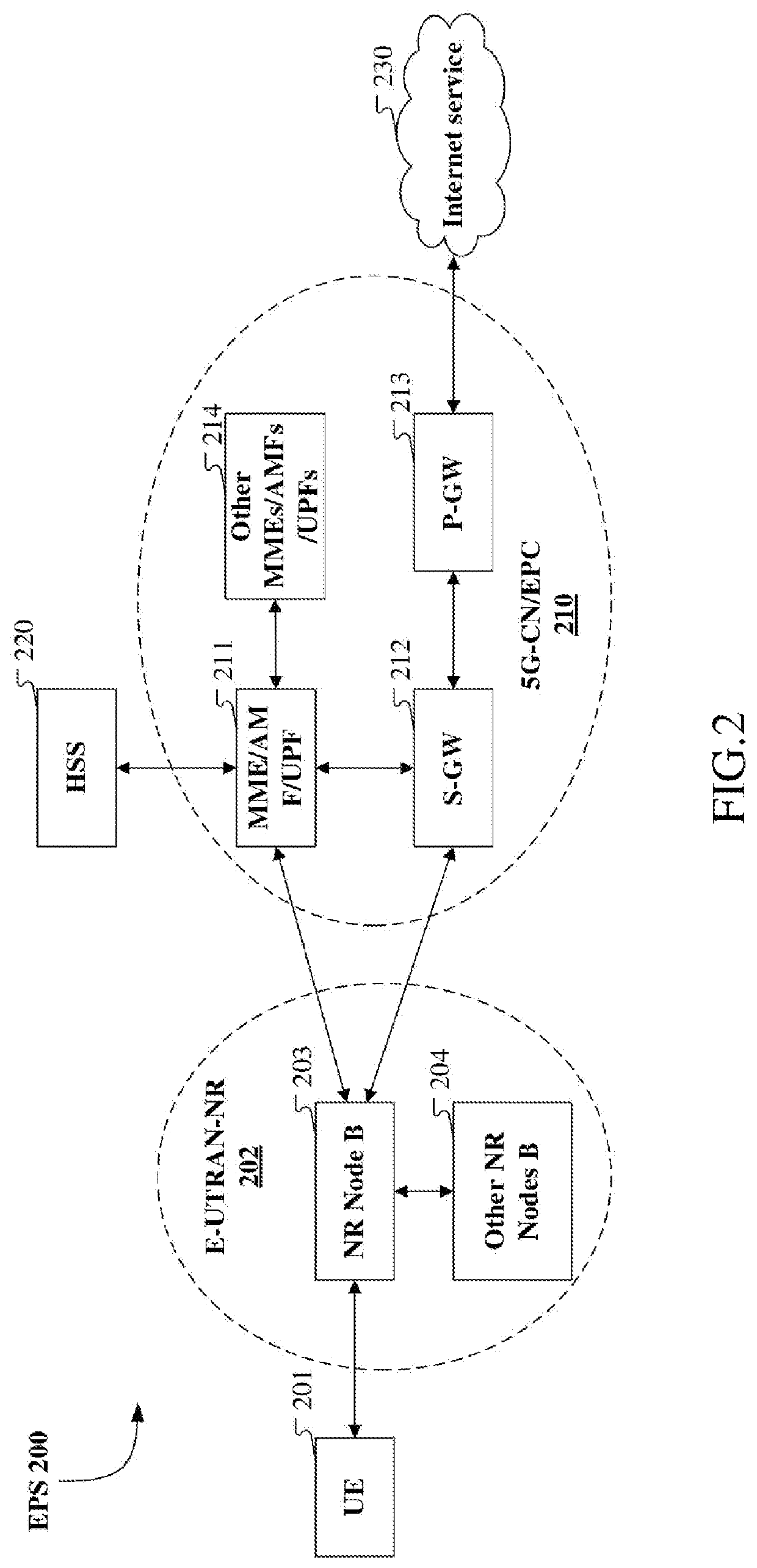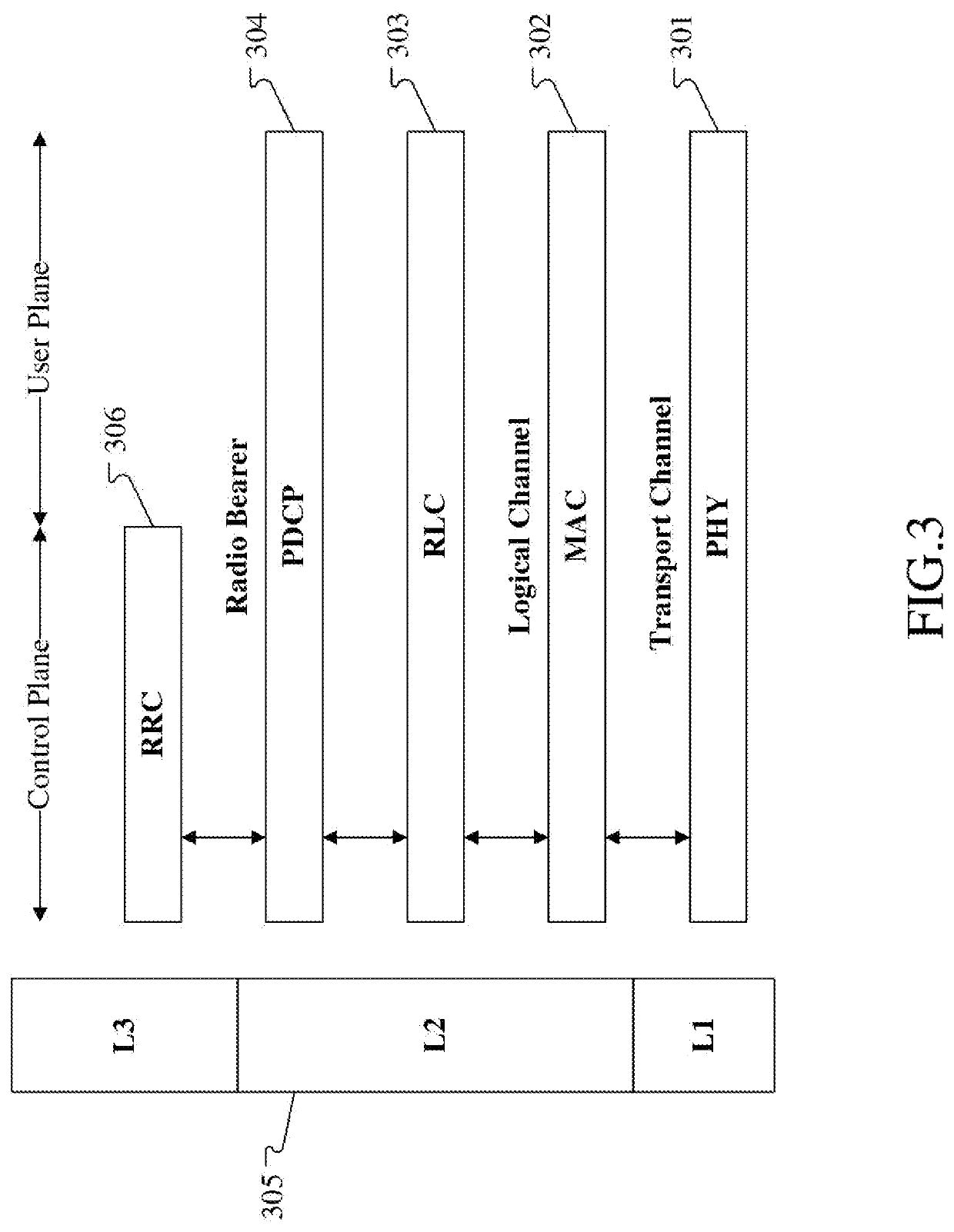Method and device in nodes with reduced signaling overhead used for wireless communication
a wireless communication and signaling overhead technology, applied in the direction of digital transmission, transmission path sub-channel allocation, wireless communication, etc., to achieve the effect of reducing signaling overhead, avoiding redundant blind detection, and streamlining operation
- Summary
- Abstract
- Description
- Claims
- Application Information
AI Technical Summary
Benefits of technology
Problems solved by technology
Method used
Image
Examples
embodiment 1
[0067]Embodiment 1 illustrates a flowchart of a first signaling, as shown in FIG. 1.
[0068]In Embodiment 1, the UE in the present disclosure first receives a first signaling; and then operates a first radio signal; the first signaling is a physical layer signaling, the first signaling comprises a first field and a second field; the first field indicates time duration of a first time window in time domain; the first time window comprises K first-type time units; a type of multicarrier symbols comprised by any of the K first-type time units is one of a first type, a second type and a third type; the K first-type time units include K1 first-type time unit(s); the second field is used for determining K1 type indicator set(s); the K1 type indicator set(s) is(are) respectively used for indicating a type(s) of multicarrier symbols comprised by the K1 first-type time unit(s); the operating is related to a type of multicarrier symbols occupied by the first radio signal; K is a positive intege...
embodiment 2
[0120]Embodiment 2 illustrates a schematic diagram of a network architecture, as shown in FIG. 2.
[0121]Embodiment 2 illustrates a schematic diagram of a network architecture according to the present disclosure, as shown in FIG. 2. FIG. 2 is a diagram illustrating a network architecture 200 of NR 5G, Long-Term Evolution (LTE) and Long-Term Evolution Advanced (LTE-A) systems. The NR 5G or LTE network architecture 200 may be called an Evolved Packet System (EPS) 200 or other applicable terminology. The EPS 200 may comprise one or more UEs 201, an NG-RAN 202, a 5G-Core / Network Evolved Packet Core (5G-CN / EPC) 210, a Home Subscriber Server (HSS) 220 and an Internet Service 230. The EPS 200 may be interconnected with other access networks. For simple description, the entities / interfaces are not shown. As shown in FIG. 2, the EPS 200 provides packet switching services. Those skilled in the art will find it easy to understand that various concepts presented throughout the present disclosure ...
embodiment 3
[0132]Embodiment 3 illustrates a schematic diagram of an example of a radio protocol architecture of a user plane and a control plane according to the present disclosure, as shown in FIG. 3.
[0133]FIG. 3 is a schematic diagram illustrating an embodiment of a radio protocol architecture of a user plane and a control plane. In FIG. 3, the radio protocol architecture for a UE and a base station (gNB or eNB) is represented by three layers, which are a layer 1, a layer 2 and a layer 3, respectively. The layer 1 (L1) is the lowest layer and performs signal processing functions of various PHY layers. The L1 is called PHY 301 in the present disclosure. The layer 2 (L2) 305 is above the PHY 301, and is in charge of the link between the UE and the gNB via the PHY 301. In the user plane, L2 305 comprises a Medium Access Control (MAC) sublayer 302, a Radio Link Control (RLC) sublayer 303 and a Packet Data Convergence Protocol (PDCP) sublayer 304. All the three sublayers terminate at the gNBs of ...
PUM
 Login to View More
Login to View More Abstract
Description
Claims
Application Information
 Login to View More
Login to View More - R&D
- Intellectual Property
- Life Sciences
- Materials
- Tech Scout
- Unparalleled Data Quality
- Higher Quality Content
- 60% Fewer Hallucinations
Browse by: Latest US Patents, China's latest patents, Technical Efficacy Thesaurus, Application Domain, Technology Topic, Popular Technical Reports.
© 2025 PatSnap. All rights reserved.Legal|Privacy policy|Modern Slavery Act Transparency Statement|Sitemap|About US| Contact US: help@patsnap.com



